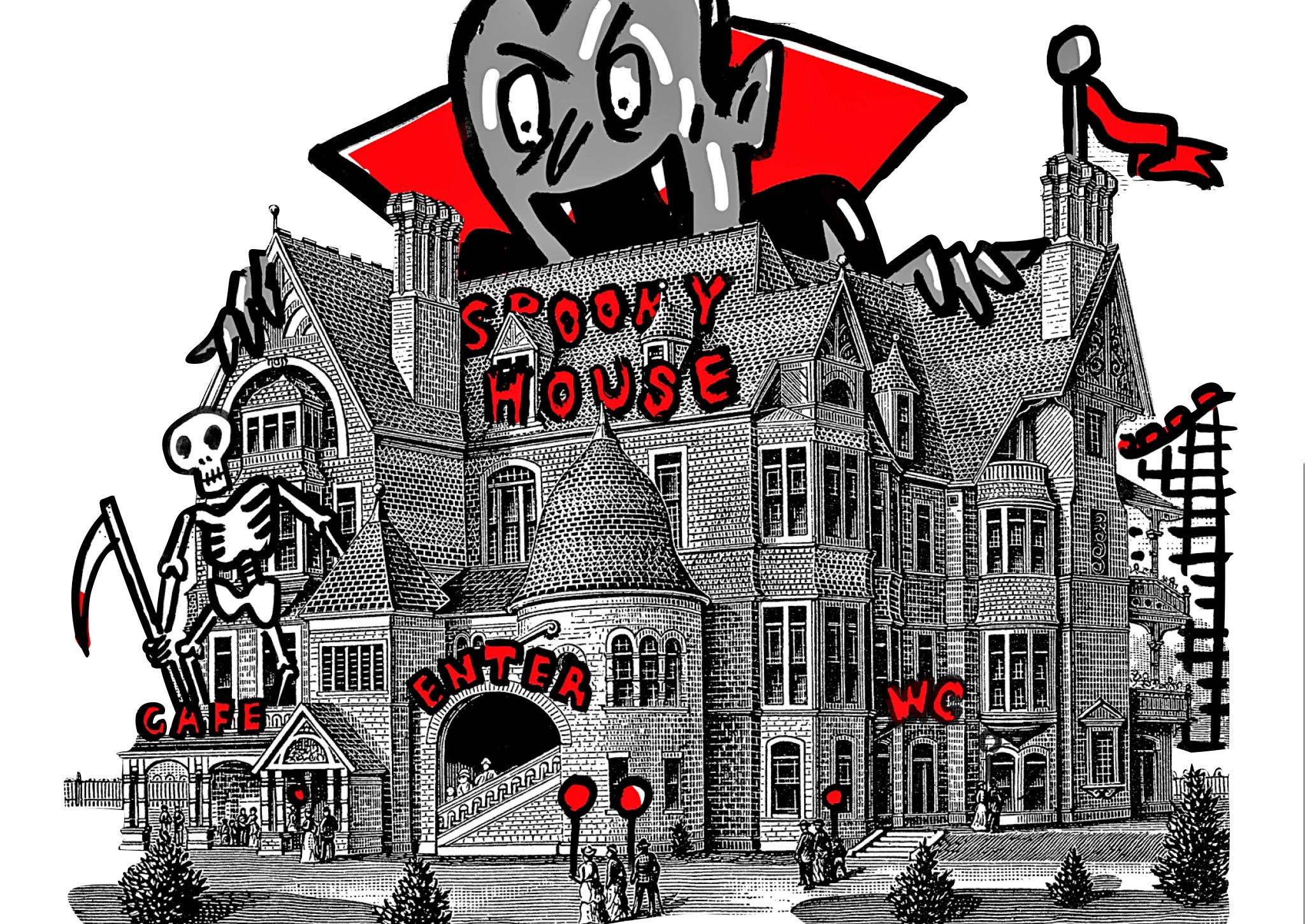Deborah Mitford and the resilience of the aristocracy
The families that have withstood decline have also harnessed change. In its upper echelons at least, the British aristocracy has always known that it has to adapt or die


Last month, I spent an afternoon at Castle Coole, the seat of the Earls of Belmore outside Enniskillen in Northern Ireland. As you do in National Trust properties, we stepped downstairs to view the kitchens. (The NT saved the Belmores and their house from death duties in 1951, part of its rich post-war harvest of distressed estates.)
Seasoned country-house visitors know the ropes: you must insist that you most enjoy snooping around the blackened ranges and the butlers’ pantries. You swear an oath of solidarity with the ghosts of those frozen scullery maids and tweenies. It’s all part of the favourite British – perhaps also Irish – pastime of having one’s cake and eating it.
I noticed that, beyond the hellish black of the range (imagine waking in the damp Fermanagh dawn to face that iron destiny, decade after decade), parts of the kitchen showed signs of cosmetic enhancement. The ebullient NT steward explained. Coole had not long ago hosted Jessica Chastain, Colin Farrell and Samantha Morton, who were all working down here. No, not scrubbing the vast pots or lugging the heavy kettle, but filming Liv Ullmann’s version of that archetypal upstairs-downstairs intrigue: August Strindberg’s play Miss Julie. Forget the kitsch of Downton Abbey (set in Yorkshire but shot at Highclere Castle in Surrey): the grand houses of these isles are more visible, accessible and familiar than ever before in their history.
On top of the long tradition of paying visitors (already established in Jane Austen’s day), location filming has opened the doors of bedroom and ballroom, kitchen and privy. But those starring roles for country seats in costume epics and period romances tell only part of the story of aristocratic survival and resilience. Even then, the swooping pan shots across august façades or crenellations may deceive. Take Chatsworth itself, home of Deborah Devonshire, née Mitford. The passing, aged 94, of the Dowager Duchess this week has prompted reappraisals not only of her errant sisterhood but also of the whole enterprise of reinvention – first for the Chatsworth Settlement itself, then for other house-rich but cash-poor dynasties – that she inspired.
Thanks to Debo’s famous nous, Chatsworth got in early on the backdrop boom. In Stanley Kubrick’s Barry Lyndon, it serves as the hero’s family home. Then, in Joe Wright’s 2005 film of Pride and Prejudice, Chatsworth starred as Mr Darcy’s Pemberley. The Darcy pad it remained for the TV dramatisation of P D James’s Death Comes to Pemberley. Note the country-house version of grade inflation: estate expansion, perhaps. Austen’s residence for a wealthy gentleman balloons on screen into a Whig oligarch’s ostentatious palace: Chatsworth has 175 rooms. In filmic hindsight, the high-status past often looks not only cleaner but much grander than it was.
Like other great houses, Chatsworth under Deborah Devonshire’s management learnt the practicality of glamour. She gilded outside window frames rather than painting them: it lasted longer, she said. Neither did gold-leaf harm the tourist flow. Chatsworth was not quite a pioneer in the conversion of a family seat into a visitor hub. After the post-Great War pandemic of sales, conversions and demolitions, the fiscal axe swung even more savagely after 1945. No one who heard Noël Coward warble about “The stately homes of England/ How beautiful they stand,/ To prove the upper classes/ Have still the upper hand” could possibly have missed the dripping irony.
At Beaulieu, Lord Montagu opened the National Motor Museum in 1952. At Woburn Abbey, the Duke of Bedford in 1955 opted to keep – and market to the public – the house and estate rather than making the by-then expected transfer to the National Trust as death duties struck. When he added a safari park in 1970, and other peers scoffed, he said that “it is better to be looked down on than overlooked”.
Other aristocrats bundled in, as guides, grocers, ringmasters, zookeepers and eager re-enactors of their own histories. Chatsworth, though, has come out ahead in this Darwinian struggle for survival. With Chatsworth Food from the home farm on sale in the shop (behind whose till the Duchess would serve) and Chatsworth Design in control of the intellectual property rights, the brand flourishes mightily. Look at the 2013 figures from the Association of Leading Visitor Attractions, and you see the benefits of Devonshire dynamism. With 644,817 punters, Chatsworth trounces every other private house – even Blenheim Palace lags behind on 610,794. Cliveden, the highest-ranked National Trust site, had 418,597 visitors. Do titled toffs in residence (or at least near at hand) still boost the numbers?
Chatsworth, first built in the 1550s after the earth-shaking match of William Cavendish and the astonishing Bess of Hardwick, ranks as an engine room of English history. But so does the grandiose, show-off Tudor palace that the much-married Bess built for herself in the 1590s on the other side of Derbyshire: “Hardwick Hall, more window than wall”. Hardwick was a Devonshire property for centuries. Then, in 1950, the death of the 10th Duke landed the family with a liability of £2.5m. The gossipy diarist “Chips” Channon asked: “Is this the end for Chatsworth? And for Hardwick?” In both cases, the answer was no, even though it took 17 years to pay off the tax bill. Each house lived on in a different way. Hardwick went to the National Trust; Chatsworth remained in the family. Within the NT portfolio, the equally illustrious and spectacular Hardwick Hall last year welcomed 220,924 customers. At Chatsworth, personal brand management, Devonshire-style, has almost tripled the footfall.
In its upper echelons at least, the British aristocracy has always known that it has to adapt or die. More sanguine historians have often argued that it sustained itself by recruiting new members from new wealth. That blood transfusion was most evident in the thousands of American heiresses who married into the landed class from the late 19th century on – those cash-for-rank swaps that produced Winston Churchill, son of Brooklyn-born Jennie Jerome. Hence its fabled flexibility, symbolised by the plucky, practical Duchess behind the till. Her illegitimate maternal grandfather, Tommy Bowles, was a satirical journalist; her great-grandmother a servant girl.
You can read the evidence otherwise, as historian Lawrence Stone signalled when he put a question mark after the title of his book An Open Elite? New blood sometimes barely trickled. Not every dinosaur proved able to evolve. Plenty of lineages expired. Yes, Cavendishes, Churchills, Herberts, Howards, Russells and Grosvenors still bloom (estimated assets, derived from central London property, of Gerald Cavendish Grosvenor, sixth Duke of Westminster: £8.5bn). But, even among the Cavendish kinsfolk, the Dukes of Newcastle went extinct in 1988. As have the Dukes of Portland. There is, however, an extant 12th Earl of Portland. He is the actor Tim Bentinck, who plays farmer David Archer in the radio soap. From brass to muck?
Political instincts as well as financial or matrimonial savvy also make the difference between a tribe’s endurance and demise. The great Whig families owed their swanky new handles to shrewd choices at key moments. None of those turning points made or broke clans like the Glorious Revolution of 1688. Then, the oligarchs’ preference for insurgency, invasion and a foreign, Protestant king (William of Orange) over the legitimate Stuarts reset the compass of British history. Today’s Chatsworth reflects the rewards. The fourth Earl of Devonshire backed William, and became a trusted henchman. In 1694, he duly won a dukedom. To celebrate, his home blossomed from house into palace. When push came to shove, the grandees could and would rebel against the state. Scoffers at the toffs often underestimate this ruthless, even revolutionary streak. With present survival and future prosperity in the balance, nothing is sacred.
A quarter-century ago, the historian David Cannadine – that wise-cracking gravedigger of the nobility – published The Decline and Fall of the British Aristocracy. Then, and later, he expressed a now-familiar scorn for the “snobbery”, “deference” and “nostalgia” that sought to grant these throwbacks a zombie afterlife. Well, no one will rebuild their flattened palaces or repurchase their lost estates. Never again will the voice of a Derby, Devonshire or Percy sway the vote across the Midlands or the North.
However, the families that have withstood decline have also harnessed change. Postmodern image brokers and brand developers, they can straddle the heritage and entertainment businesses. With forelock-tugging long gone, the “sentimental deference” that Cannadine deplored has surely waned. Still, the big, titled beasts (or some of them) thrive. Their role has changed: from power to performance. Snobbery or nostalgia will not keep them afloat – rather, the skills to deliver a smarter sort of showbiz. They have become the star attractions, and the rarest species, in their own safari parks. As the zoologists put it: charismatic megafauna.
Even when – as at Coole Castle – the specimens retire from view, the massed ranks of the National Trust (19.2 million visitors last year) and the screen appeal of a prime location ensure that they will not entirely fade away. That “decline and fall” narrative does not quite match all the history. To grasp how this drive for renewal worked at Chatsworth, read The Devonshires: a gripping dynastic chronicle written by a true friend of the house and family. His name? Roy Hattersley, for a decade the deputy leader of the Labour Party.
Join our commenting forum
Join thought-provoking conversations, follow other Independent readers and see their replies
Comments